Do you obsess over your appearance? Are you constantly worried about the way you look, no matter how minor your concerns maybe? If so, you may be struggling with body dysmorphia. This is a serious mental illness that can cause a great deal of distress and anxiety in those who suffer from it. In this comprehensive guide, we will discuss all aspects of body dysmorphia, including its causes, symptoms, and treatment options. We hope that this information will help you gain a better understanding of this condition and allow you to get the help you need if you are struggling with it.
Contents
- 1 What Is Body Dysmorphia?
- 2 Types of Body Dysmorphia
- 3 Signs of Body Dysmorphia
- 4 Causes of Body Dysmorphia
- 5 Risk Factors for Body Dysmorphia
- 6 Negative Impacts of Body Dysmorphia
- 7 Diagnosis of Body Dysmorphia
- 8 Treatment of Body Dysmorphia
- 9 How To Prevent Body Dysmorphia?
- 10 Helping Someone With Body Dysmorphia
- 11 Conclusion
What Is Body Dysmorphia?
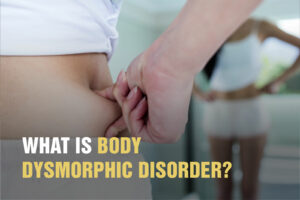 Body dysmorphia is a mental health disorder that causes someone to fixate on one or more perceived flaws in their appearance. People with body dysmorphia often obsess over the way they look and compare themselves to others, feeling like they don’t measure up. This can lead to avoidance of social situations, severe anxiety, and depression. Body dysmorphia can also lead to compulsive behaviors like excessive exercise, dieting, and skin picking.
Body dysmorphia is a mental health disorder that causes someone to fixate on one or more perceived flaws in their appearance. People with body dysmorphia often obsess over the way they look and compare themselves to others, feeling like they don’t measure up. This can lead to avoidance of social situations, severe anxiety, and depression. Body dysmorphia can also lead to compulsive behaviors like excessive exercise, dieting, and skin picking.
This condition is also a type of OCD, known as Body Dysmorphic Disorder (BDD). People with BDD often have obsessions about their appearance and spend a lot of time thinking about or trying to improve the way they look. They may even avoid social situations altogether because they’re afraid other people will notice their perceived flaws.
Many times there may be also an underlying eating disorder, such as anorexia nervosa or bulimia nervosa. People with body dysmorphia often see themselves as overweight, even when they’re not. They may diet excessively and compulsively exercise to the point of injury.
Types of Body Dysmorphia
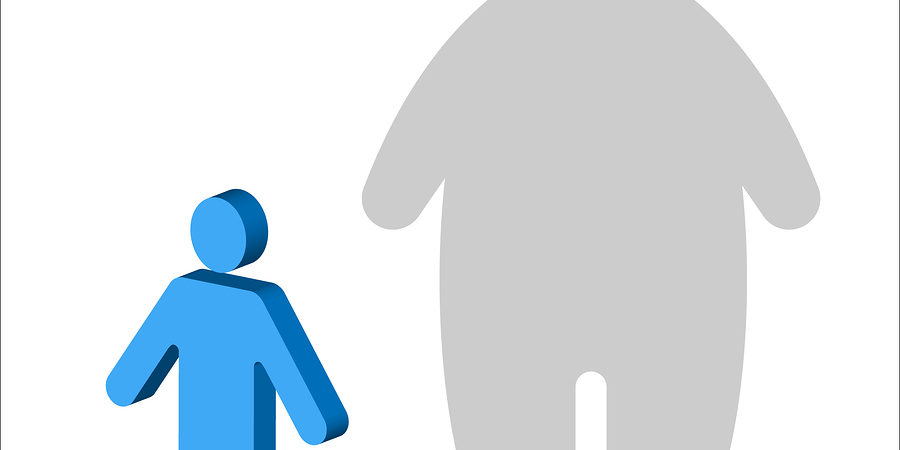
There are many different types of body dysmorphia, but the most common ones include:
Muscle Dysmorphia
Muscle dysmorphia is a form of body dysmorphia that causes someone to believe they’re not muscular enough, no matter how much they work out. People with muscle dysmorphia often spend hours at the gym lifting weights and working out, but they never feel like it’s enough. They may also use steroids or other performance-enhancing drugs to try to build more muscle mass.
Skin Dysmorphia
Skin dysmorphia is a form of body dysmorphia that causes someone to believe their skin is flawed in some way. People with skin dysmorphia may obsess over acne, wrinkles, or any perceived imperfections. They may spend hours looking in the mirror and picking at their skin. They may also avoid social positions because they’re afraid people will notice their flaws.
Hair Dysmorphia
Hair loss can be a symptom of body dysmorphia, but it can also be a standalone condition. People with hair dysmorphia obsess over the loss of their hair, or they may believe that they have more hair than they do. noses condition can lead to excessive grooming, such as combing and brushing, as well as the use of products like hair dyes and styling products. In extreme cases, people with hair dysmorphia may resort to surgery to correct their perceived problem.
Nose Dysmorphia
Nose dysmorphia is a subtype of body dysmorphic disorder (BDD) in which the individual fixates on perceived fit avoidance of their nose. People with nose dysmorphia may spend hours each day thinking about their nose and engage in behaviors such as compulsive mirror checking, excessive grooming, and skin picking. In severe cases, people with this condition may even go so far as to get plastic surgery to try and “fix” their noses.
Ear Dysmorphia
Ear dysmorphia is a subtype of body dysmorphia that specifically involves concerns about the appearance of one’s ears. People with ear dysmorphia may worry that their ears are too big, too small, or misshapen in some way. They may also be coned about visible, defects or imperfections on their earlobes or outer ear structure. Ear dysmorphia can lead to avoidance of social situations, distress, and functional impairment. It is important to seek professional help if you think you may be experiencing ear dysmorphia.
Breast Dysmorphia
Breast dysmorphia is a subtype of body dysmorphic disorder (BDD) characterized by an obsession with the size, shape, and/or appearance of one’s breasts. People with breast dysmorphia may believe that their breasts are too small, too large, asymmetrical, droopy, or otherwise defective in some way. They may spend hours comparing their breasts to those of other women, scrutinizing their bodies in mirrors, or avoiding looking at themselves altogether. Breast dysmorphia can lead to a preoccupation with cosmetic surgery as well as compulsive exercise and dieting behaviors.
These are only a few examples, but the list goes on and on because individuals can be dysmorphic about any area or feature of their body. If you think you may have body dysmorphia, it’s important to seek professional help.
Signs of Body Dysmorphia
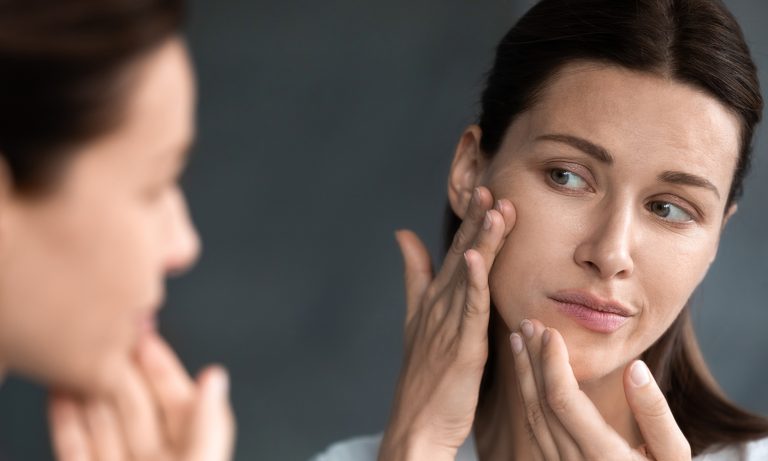
There are many signs of body dysmorphia, but some of the most common ones are:
Preoccupation with a specific body part or parts
This sign is what separates body dysmorphic disorder from general dissatisfaction with one’s appearance. People with BDD can become fixated on a single feature or multiple features of their appearance to the point where it consumes their thoughts. For example, a person may obsess over the size or shape of their nose, their skin blemishes, or the way their hair looks.
Comparing oneself to others
People with body dysmorphic disorder often compare themselves to other people, either in real life or in photographs and media images. They may believe that everyone else is better looking than they are and that they are the only ones who see themselves as defective. This comparison can lead to feelings of envy and inferiority.
Excessive grooming behaviors
People with body dysmorphic disorder may spend hours each day engaged in grooming behaviors such as hair-styling, plucking, and applying makeup. They may also frequently change their clothes or style in an attempt to camouflage the perceived flaw.
Body dysmorphic disorder can lead to avoidance of social situations where the individual fears that others will see their flaws. For example, a person with BDD may hate school, making new friends, or dating. In severe cases, people with BDD may become completely isolated and housebound.
Obsessive exercise
People with body dysmorphic disorder may compulsively exercise in an attempt to improve their appearance. This can lead to excessive muscularity or weight loss and can be a symptom of an underlying eating disorder. Sometimes there may also be many injuries. Also, there may be steroid abuse.
Compulsive dieting
People with body dysmorphic disorder may also engage in compulsive dieting behaviors in an attempt to change their appearance. This can lead to malnutrition, weight loss, and other health problems. It may also hurt the individual’s mental health.
Constant self-checking
People with body dysmorphic disorder often check their appearance frequently, either in mirrors or by touching the perceived flaw. They may also ask others for reassurance about their appearance or avoid mirrors altogether.
Extreme self-consciousness
People with body dysmorphic disorder are usually very self-conscious and embarrassed about their appearance. They may believe that others are constantly staring at and judging them. This can lead to anxiety, depression, and social isolation.
These are some of the signs of body dysmorphic disorder. If you think that you may have this disorder, it is important to seek professional help.
Causes of Body Dysmorphia
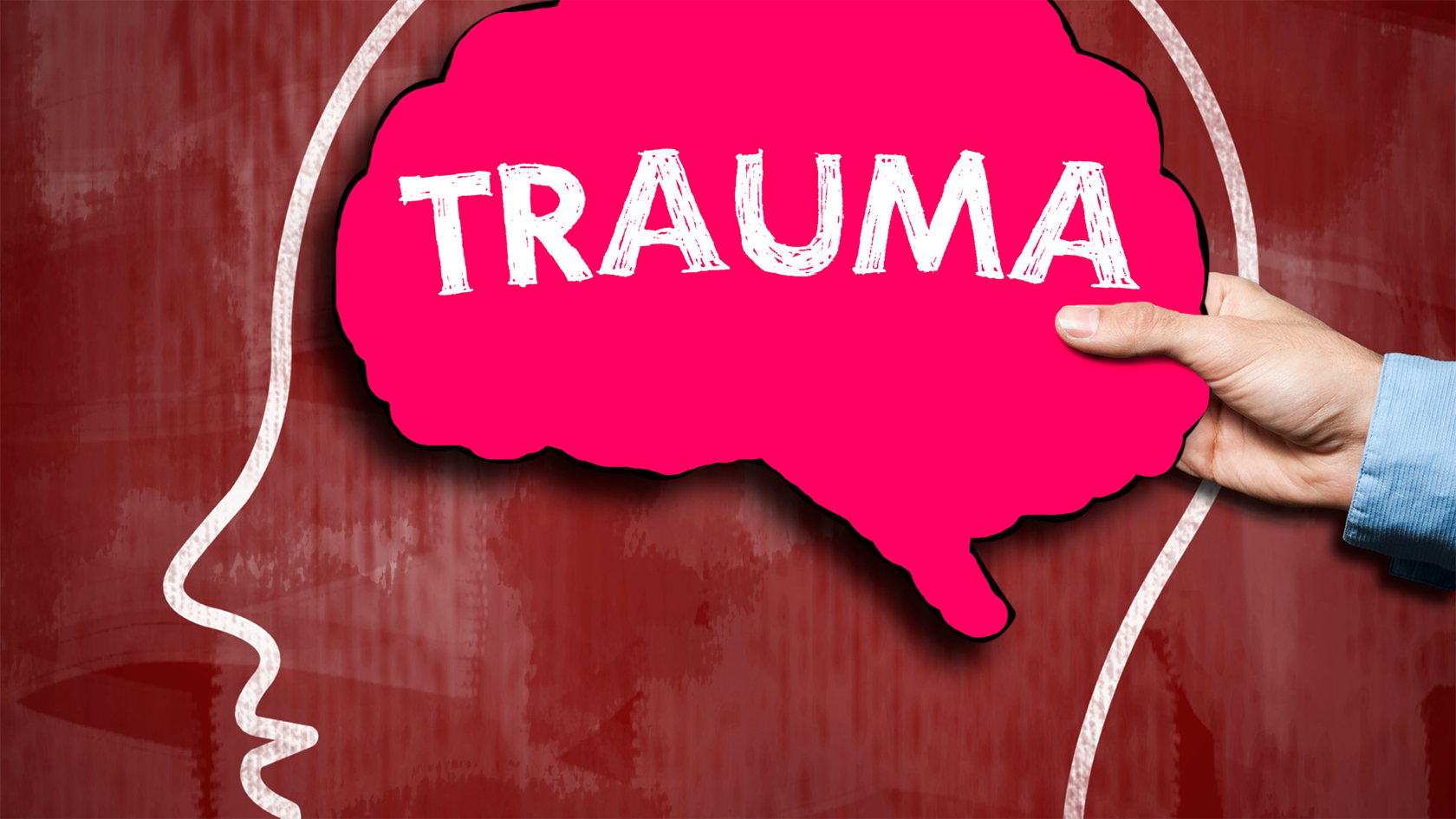
Body dysmorphia can be caused by a variety of different factors. Some of these causes are:
Genetics
Genetics are thought to play a role in the development of body dysmorphic disorder. Studies have shown that this disorder is common in people who have first-degree relatives with the condition. Sometimes there may be many people in the family with similar body image issues. When people have this disorder, it may be more difficult for them to see how they look. When your brain is wired a certain way, you may be more likely to focus on the negative aspects of your appearance.
Environmental factors
Environmental factors such as media images and societal pressure can also contribute to the development of body dysmorphic disorder. The constant exposure to “perfect” images in the media can create unrealistic standards of beauty that are difficult to achieve. This can lead people to believe that their flaws are unacceptable and cause them distress. Social pressure to conform to certain standards of appearance can also be a contributing factor. For example, people who feel pressured to be thin or have perfect skin may be more likely to develop body dysmorphia.
Brain chemistry
Some research suggests that abnormalities in brain chemistry may play a role in the development of body dysmorphic disorder. This may explain why this disorder is more common in people who have relatives with mental illness. It may also be why this disorder often occurs alongside other mental health conditions such as anxiety, depression, and eating disorders. Also, people with body dysmorphic disorder may have an imbalance of certain chemicals in their brains, such as serotonin. This chemical is thought to play a role in mood and anxiety.
Trauma
Trauma is also thought to certain factor for body dysmorphic disorder. This may include physical or sexual abuse or witnessing traumatic events. These experiences can lead to feelings of powerlessness and low self-esteem. People who have experienced trauma may be more likely to develop body dysmorphia as a way of coping with these difficult emotions. Sometimes it also may be a way of dissociating from the trauma.
These are some of the possible causes of body dysmorphic disorder. It is important to remember that this disorder can be caused by a combination of different factors. If you think that you may have this disorder, it is important to seek professional help.
Risk Factors for Body Dysmorphia

Certain factors may increase your risk of developing body dysmorphic disorder. Some of these risk factors include:
Anxiety disorders
Anxiety disorders are one major risk factor for developing body dysmorphic disorder. People with anxiety disorders tend to be more focused on their physical appearance and are more likely to have negative thoughts and feelings about their bodies.
Depression
Depression is another major risk factor for body dysmorphic disorder. People who are depressed often have negative thoughts and feelings about their appearance. They may also withdraw from social activities and have difficulty functioning in their everyday lives.
Obsessive-compulsive disorder (OCD)
People with OCD often obsessively focus on one or more aspects of their appearance that they believe are flawed. This can lead to distress and problems in daily life. Also many times, people with OCD may have body dysmorphic disorder.
Eating disorders
People with eating disorders often focus on their weight, shape, and appearance. This can lead to feelings of low self-esteem and poor body image. People with eating disorders are also at risk of developing body dysmorphic disorder.
Other mental health conditions
Other mental health conditions, such as social anxiety disorder and post-traumatic stress disorder (PTSD), may also increase the risk of developing body dysmorphic disorder. These conditions can cause people to be more focused on their physical appearance and to have negative thoughts and feelings about their bodies.
Abuse
Sometimes people with abuse also develop body dysmorphic disorder. This may be because they have a history of trauma or abuse that has led to negative thoughts and feelings about their appearance. There may also be a link between abuse and eating disorders, which can also increase the risk of developing body dysmorphic disorder.
These are just some of the possible risk factors for developing body dysmorphic disorder. If you think you may have the condition, it’s important to talk to a mental health professional who can help you get an accurate diagnosis and treatment plan.
Negative Impacts of Body Dysmorphia

There are many negative impacts of body dysmorphia that can severely interfere with a person’s quality of life. Some of these are:
Social Isolation
Social isolation is a common occurrence for people with body dysmorphia. They may avoid going out in public or participating in activities with others because they are afraid of being judged or ridiculed. This can lead to feelings of loneliness and depression. Sometimes isolation can also lead to substance abuse as a way of coping with negative emotions.
Problems at work or school
Body dysmorphia can also cause problems at work or school. People may miss work or school because they are too afraid to leave the house. They may also have difficulty concentrating on their work or studies because they are preoccupied with their appearance. This can lead to job loss or poor grades.
Relationship problems
Body dysmorphic disorder can also cause problems in relationships. People with the condition may avoid social interactions, which can make it difficult to form and maintain relationships. They may also have difficulty in intimate relationships because they are afraid of being seen naked or being rejected because of their appearance.
Missed Opportunities
People with body dysmorphia often miss out on opportunities because they are too focused on their perceived flaws. This can include things like not applying for a job because they don’t think they are good enough, or not going on a date because they are afraid of how the other person will react to their appearance. It may also lead to problems in relationships or social interactions because people are too afraid to participate.
Self-Harm
Self-harm is a common occurrence in people with body dysmorphic disorder. This may be because they are trying to “fix” their perceived flaws or because they are seeking relief from the negative thoughts and feelings about their appearance. Self-harm can include things like cutting, burning, or excessive skin picking. It can also lead to more serious problems like eating disorders or substance abuse. There may be also many suicide attempts.
These are some of the impacts of body dysmorphic disorder. As you can see, the condition can have a severe impact on a person’s life. If you think you may have the condition, it’s important to talk to a mental health professional who can help you get an accurate diagnosis and treatment plan.
Diagnosis of Body Dysmorphia
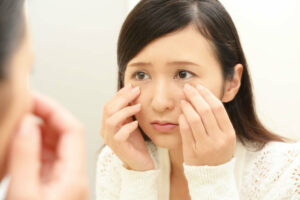 Diagnosing body dysmorphia can be difficult as the disorder is often accompanied by other mental health conditions, such as anxiety or depression. There is no one specific test or criteria that need to be met for a person to be diagnosed with body dysmorphia.
Diagnosing body dysmorphia can be difficult as the disorder is often accompanied by other mental health conditions, such as anxiety or depression. There is no one specific test or criteria that need to be met for a person to be diagnosed with body dysmorphia.
A diagnosis is typically made by a mental health professional after conducting a thorough evaluation which includes taking into account the person’s medical history, symptoms, and psychological state. There are several different types of professionals who can diagnose body dysmorphia, including psychiatrists, psychologists, and counselors.
There are some self-tests also that are available online, but it’s important to note that these are not a substitute for a professional evaluation. If you think you may have body dysmorphia, the best thing to do is to talk to a mental health professional who can help you get an accurate diagnosis and treatment plan.
Some of these self-tests are:
-The Body Dysmorphic Disorder Test
-The Body Image Disturbance Test
-The YALE-BROWN Obsessive Compulsive Scale Modified for Body Dysmorphic Disorder
There can be many benefits of these tests as they can help someone realize that they need to seek help from a professional. It is however important to keep in mind that these tests are not a substitute for an evaluation by a mental health professional.
Treatment of Body Dysmorphia
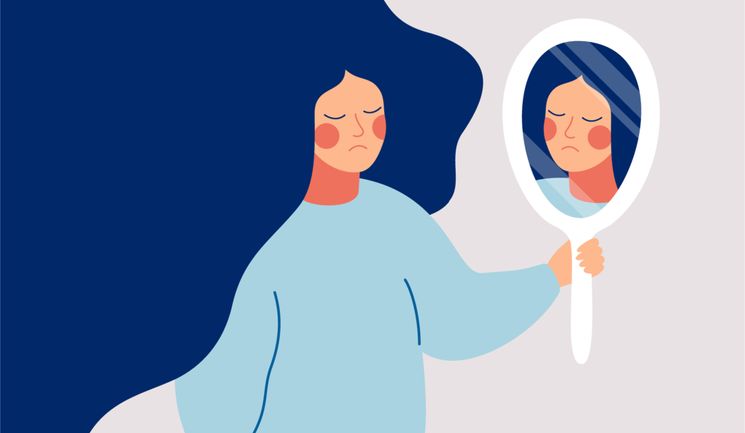
There are many different treatment options available for body dysmorphic disorder. The most common and effective treatments are cognitive behavioral therapy, medication, and support groups.
Medications
Medications are often used to treat body dysmorphic disorder. The most common type of medication is antidepressants. These can help to reduce the anxiety and depression that are often associated with the condition. These medications are also often used to treat other mental health conditions that often occur alongside body dysmorphia, such as OCD or social anxiety disorder.
Some of these medications are:
-Selective serotonin reuptake inhibitors (SSRIs)
-Serotonin and norepinephrine reuptake inhibitors (SNRIs)
-Tricyclic antidepressants (TCAs)
-Monoamine oxidase inhibitors (MAOIs)
Therapy
Therapy is a vital part of treatment for body dysmorphia. It can help you understand the root causes of your disorder and give you tools to deal with negative thoughts and behaviors.
There are many different types of therapy. If you’re considering therapy, it’s important to find a therapist who is experienced in treating body dysmorphia. You can ask your doctor for recommendations or search for a qualified therapist online.
Some of these types of therapy are:
Cognitive Behavioral Therapy
Cognitive behavioral therapy is a type of therapy that focuses on changing negative thinking and behaviors. It can be very effective in treating body dysmorphic disorder. CBT is also often used to treat other mental health conditions, such as anxiety and depression. Sometimes there may be also group therapy sessions available which can be very beneficial.
Dialectical Therapy
Dialectical Therapy is a type of therapy that focuses on helping people accept themselves as they are. It can be very effective in treating body dysmorphic disorder. In DBT also, group therapy sessions may be available which can help provide support and guidance.
Family Therapy
Families can be a great source of support during treatment. Family therapy can help to improve communication and understand the impact that body dysmorphia has on loved ones. Family therapy also helps to build a support system that can be very beneficial.
Acceptance Therapy
A type of therapy that helps people accept themselves as they are. It can be very effective in treating body dysmorphic disorder. It may also help to provide support and guidance in group therapy sessions.
Support Groups
Support groups can provide valuable support and guidance for people with body dysmorphic disorder. They can also be a great way to connect with others who understand what you’re going through. There are many different types of support groups available, both online and in person. You can ask your doctor for recommendations or search for a group online.
Self-Care
Another treatment option is self-care. This can include things like exercise, relaxation techniques, and healthy eating. Self-care is a vital part of treatment for body dysmorphic disorder. It can help to reduce stress, improve your mood, and boost your self-esteem.
If you or someone you know is struggling with body dysmorphic disorder, there are many resources available to help. Seek professional help from a mental health provider if you’re feeling overwhelmed or suicidal.
How To Prevent Body Dysmorphia?

Preventing body dysmorphia can be difficult. It often starts with a negative thought or experience about your body. Once you have these thoughts, it can be hard to stop them from taking over.
Some of these steps are:
Identifying Triggers
One of the main ways to prevent body dysmorphic disorder is to identify your triggers. These are the things that make your negative thoughts about your body worse. Once you know what these triggers are, you can start to avoid them or manage them better. Sometimes there are also environmental triggers, such as seeing images of thin or perfect-looking people.
Challenging Negative Thoughts
Another way to prevent body dysmorphic disorder is to challenge your negative thoughts. This means taking a close look at your thoughts and questioning why you believe them. Are they true? What evidence do you have to support them? Once you start to question your negative thoughts, they will start to lose their power over you.
Building Self-Esteem
One of the best ways to prevent body dysmorphic disorder is to build self-esteem. This means valuing and accepting yourself for who you are. It can be difficult to do this if you’re used to thinking negatively about yourself, but there are many things you can do to start building self-esteem. These include accepting compliments, setting realistic goals, and spending time with people who make you feel good about yourself.
Avoiding Comparison
Another way to prevent body dysmorphic disorder is to avoid comparing yourself to others. This can be difficult, but it’s important to remember that everyone is different and that there is no such thing as the perfect body. Comparison only leads to feelings of insecurity and inadequacy. Instead, focus on your unique qualities and what makes you special.
These are some of the ways that you can prevent body dysmorphic disorder. If you think you may be at risk, it’s important to seek professional help. Early intervention is key to preventing the condition from getting worse.
Helping Someone With Body Dysmorphia

Helping someone with body dysmorphia can be difficult. The person may not want to talk about their disorder or may not believe they have a problem. It is important to be patient and understand that the person is suffering from a mental illness. Here are some tips on how to help someone with body dysmorphia:
Be Supportive
One of the main tips on how to help someone with body dysmorphia is to be supportive. This means being accepting, patient, and non-judgmental. It is important to listen to the person and show them that you care. One support comes in the form of providing resources and information about the disorder.
Encourage Treatment
Another way to help someone with body dysmorphic disorder is to encourage them to seek treatment. This can be difficult, but it’s important to let the person know that there are many options available and that recovery is possible. You can offer to go with them to appointments or help them find a therapist.
Help Them To Build Self-Esteem
One of the best ways you can help someone with body dysmorphic disorder is to help them build self-esteem. This means teaching them to value and accept themselves for who they are. There are many things you can do to build self-esteem, such as complimenting the person, setting realistic goals, and spending time with them.
Encourage Positive Body Image
Another way to help someone with body dysmorphic disorder is to encourage a positive body image. This means helping the person to see their body in a more positive light. One way to do this is by showing them images of people who are comfortable and confident in their skin. You can also help them to appreciate their unique qualities and what makes them special.
Help Them To Challenge Negative Thoughts
One of the best ways to help someone with body dysmorphic disorder is to challenge their negative thoughts. This means taking a close look at their thoughts and questioning why they believe them. Are they true? What evidence do you have to support them? Once you start to question their negative thoughts, they will start to lose their power over you.
Conclusion
Body dysmorphia is a mental disorder that causes people to obsess over their appearance. It can lead to severe anxiety, depression, and even suicide. If you think you may have body dysmorphia, it’s important to seek professional help. Treatment usually involves therapy and medication. With treatment, most people with body dysmorphia can live relatively normal lives.
If you or someone you know is struggling with body dysmorphia, there are resources available to help. Sometimes there may also be support groups specifically for people with this disorder. If you or someone you know is in immediate danger, contact us. Your mental health — Your psychological, emotional, and social well-being — has an impact on every aspect of your life.
Hope this article was of help to you! If you are suffering from BDD, you may seek help from Therapy Mantra. We have a team of highly trained and experienced therapists who can provide you with the tools and skills necessary for overcoming BDD. Contact us today to schedule an online therapy or download our free OCD treatment app on Android or iOS for more information.


